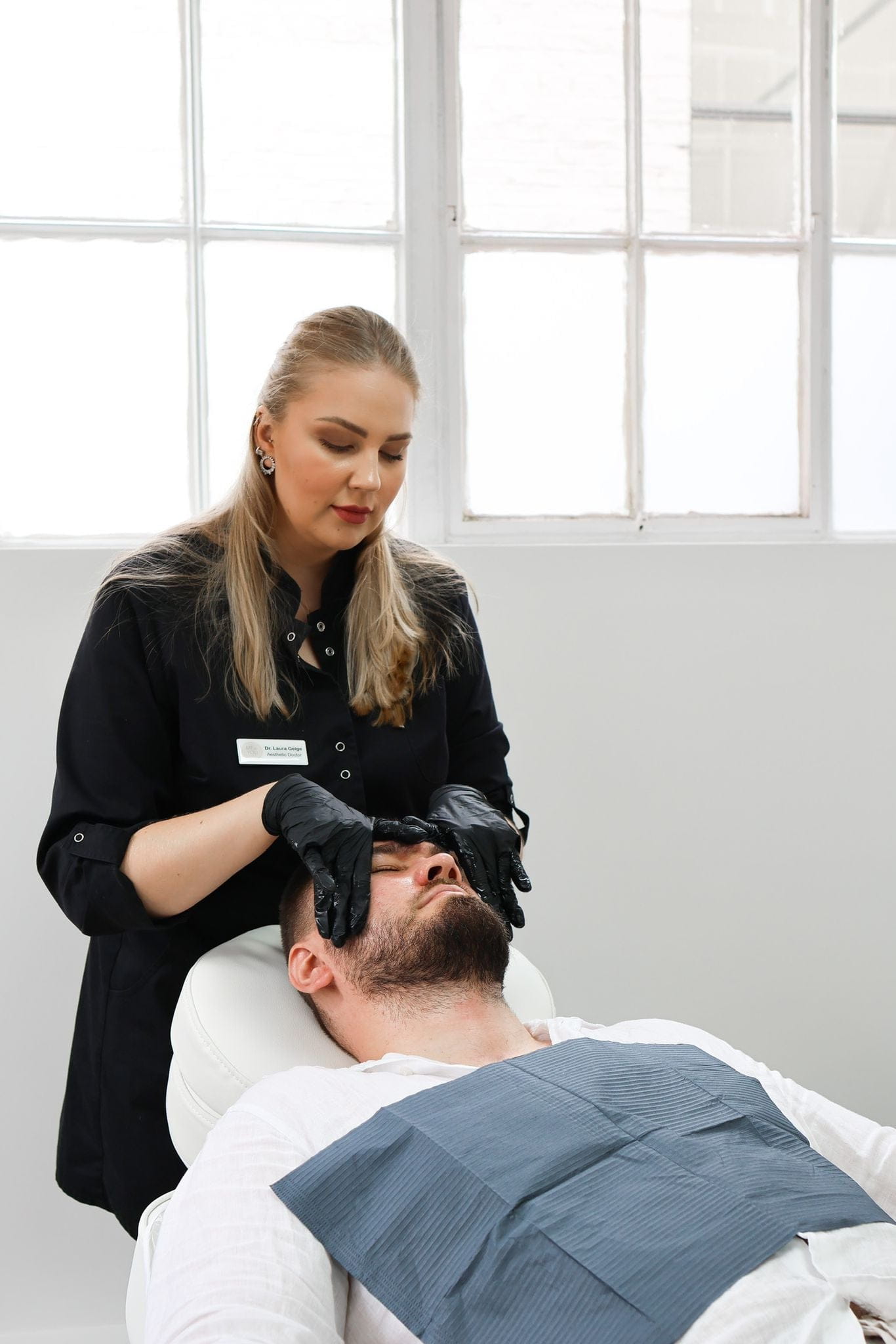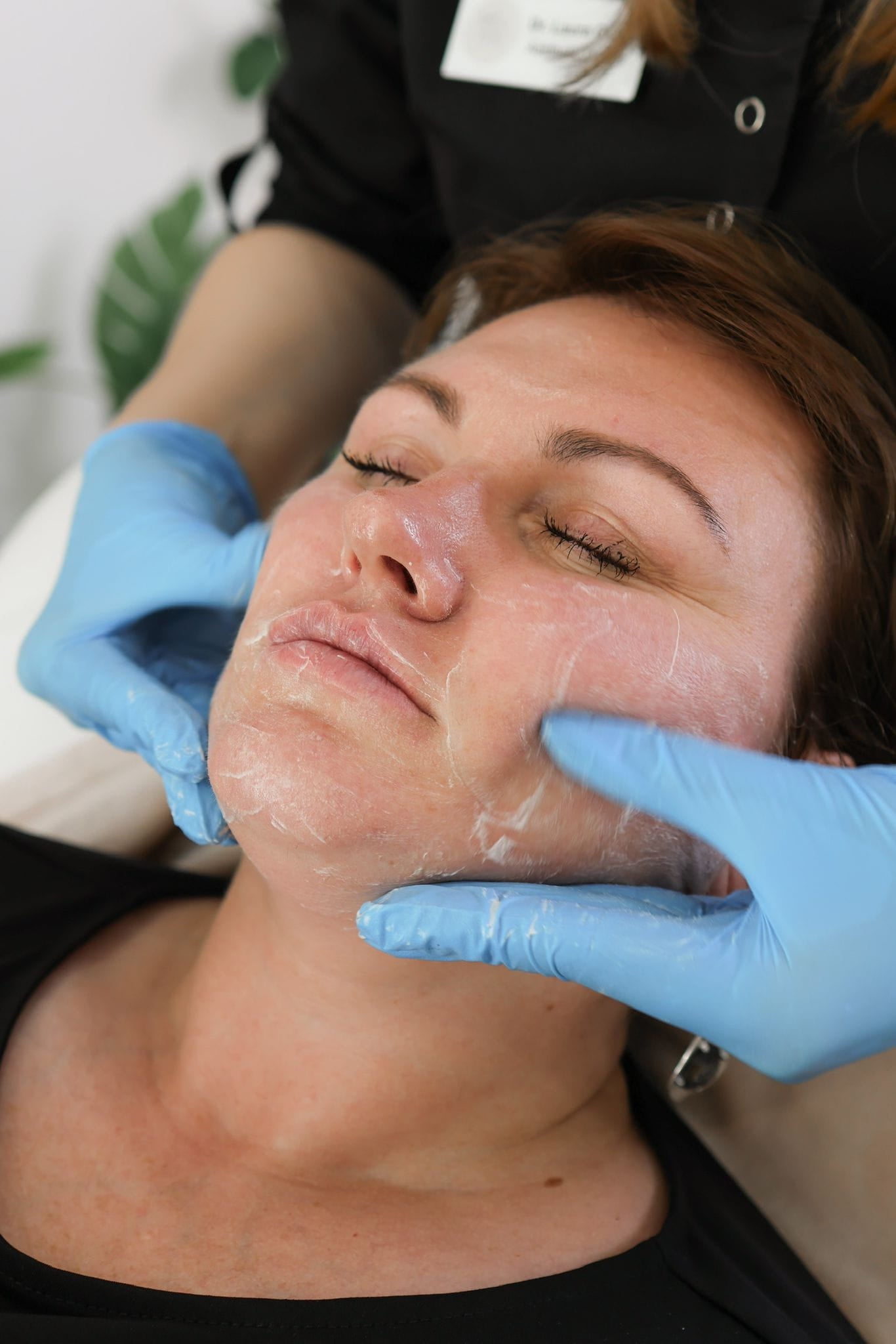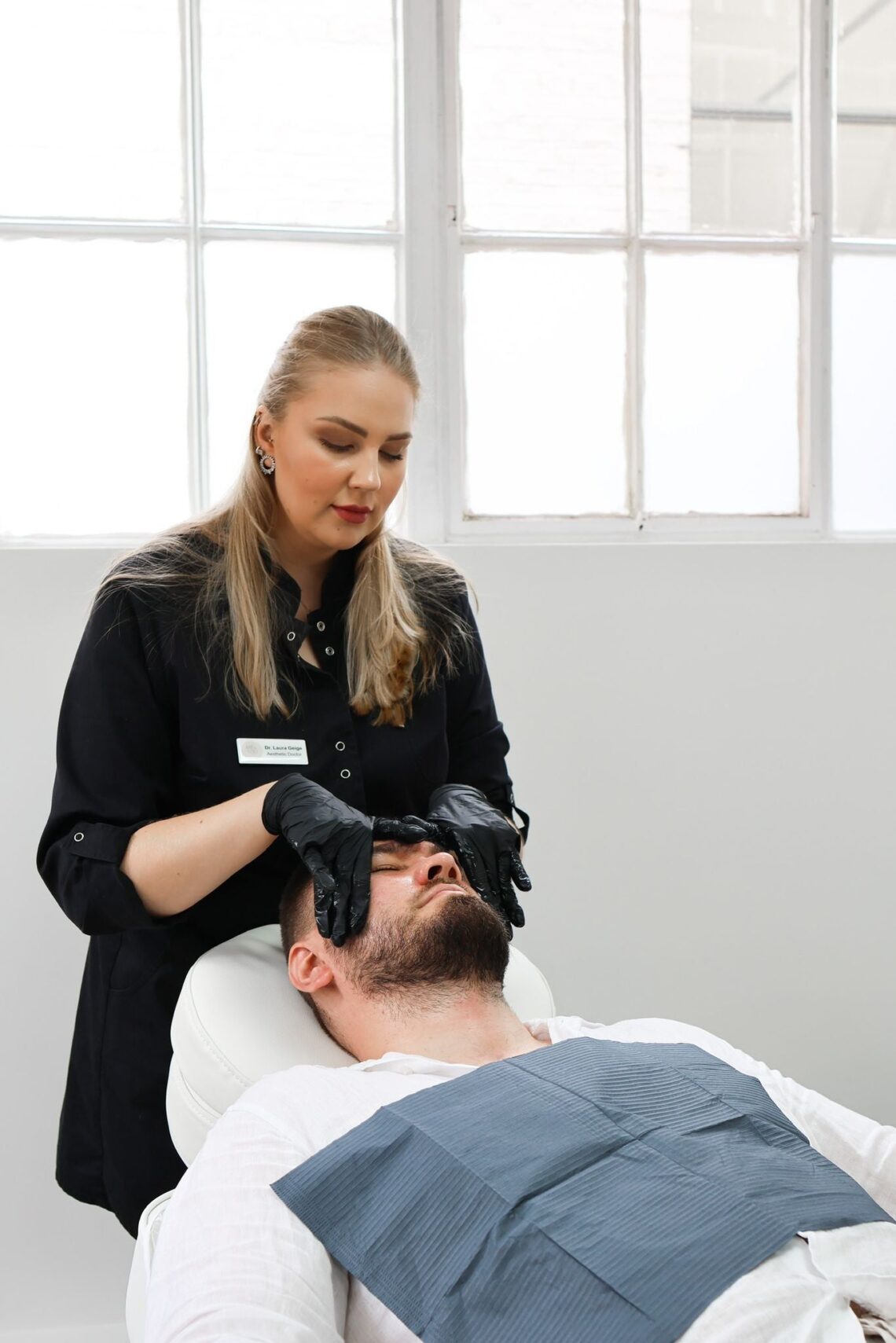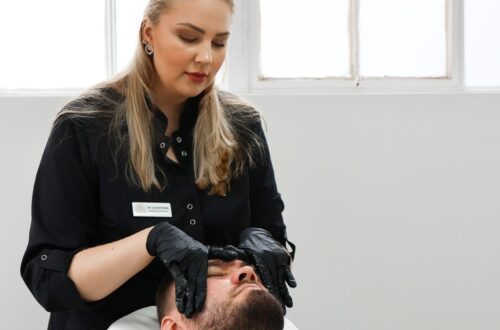What is Cosmelan Depigmentation Peel?
The Cosmelan Depigmentation Peel has gained significant popularity as a treatment for hyperpigmentation, offering the promise of long-lasting results. This intensive chemical peel utilizes a potent blend of ingredients to target melanin production and reduce the appearance of dark spots, freckles, and uneven skin tone.

Composition and Mechanism
The Cosmelan Depigmentation Peel is a professional-grade treatment designed to address hyperpigmentation concerns like sunspots, melasma, and post-inflammatory hyperpigmentation. It works by inhibiting melanin production within the skin, leading to a reduction in the appearance of dark spots and an overall improvement in skin tone.
The Cosmelan peel utilizes a unique combination of active ingredients, including:
- Kojic Acid
- Arbutin
- Hydroquinone
- Azelaic Acid
These ingredients work synergistically to target different stages of melanin production. Kojic acid and arbutin inhibit tyrosinase, the enzyme responsible for producing melanin. Hydroquinone blocks melanosomes from transferring pigment to surrounding cells, while azelaic acid reduces inflammation and promotes skin cell turnover.
Application Process
The Cosmelan Depigmentation Peel is a professional chemical peel designed to address hyperpigmentation concerns such as sunspots, melasma, and post-inflammatory hyperpigmentation.
It works by targeting melanin production within the skin, leading to a reduction in the appearance of dark spots and an overall improvement in skin tone. The application process typically involves several steps:
- Consultation: A dermatologist or qualified practitioner will assess your skin condition, medical history, and expectations to determine if the Cosmelan peel is suitable for you.
- Preparation: Your skin may be cleansed and exfoliated prior to the treatment to ensure optimal product penetration.
- Application: The Cosmelan solution is applied to the affected areas of the skin.
- Mask Placement: A special mask may be applied over the Cosmelan solution to enhance its effectiveness and protect the surrounding skin.
- Duration: The mask remains on for a specific period, which varies depending on individual skin sensitivity.
- Removal & Aftercare Instructions: The mask is removed, and your practitioner will provide detailed aftercare instructions to ensure proper healing and minimize potential side effects.
It’s important to note that the Cosmelan Depigmentation Peel can cause temporary redness, peeling, and sensitivity. Patients are advised to use sun protection diligently throughout their treatment and post-treatment period. Multiple sessions may be required to achieve optimal results, and regular maintenance treatments may be recommended to sustain long-term pigmentation improvement.
Effectiveness of Cosmelan for Pigmentation Treatment
The Cosmelan Depigmentation Peel has emerged as a popular treatment for hyperpigmentation, promising long-lasting results for those seeking to diminish the appearance of dark spots, freckles, and uneven skin tone.
Targeting Various Pigmentation Types
The effectiveness of Cosmelan for pigmentation treatment varies depending on the type of pigmentation being treated.
For sunspots, which are caused by sun exposure, Cosmelan can be highly effective in reducing their appearance. It works by inhibiting melanin production and promoting skin cell turnover, leading to a lighter complexion.
Melasma, a condition characterized by brown patches on the face often triggered by hormonal changes or sun exposure, also responds well to Cosmelan treatment. Its powerful combination of ingredients targets melanin production and reduces inflammation, helping to fade melasma marks.
Post-inflammatory hyperpigmentation, resulting from acne scars or other skin injuries, can also benefit from Cosmelan. The peel’s ability to address melanin overproduction helps lighten post-inflammatory pigmentation and improve skin tone uniformity.
However, it is crucial to consult with a qualified dermatologist or skincare professional before undergoing any treatment. They can assess your specific pigmentation type, skin condition, and medical history to determine if Cosmelan is the right choice for you.
Clinical Studies and Evidence
The effectiveness of Cosmelan for pigmentation treatment is supported by clinical studies and anecdotal evidence. Research has shown that Cosmelan can effectively reduce the appearance of sunspots, melasma, and post-inflammatory hyperpigmentation.
Several studies have demonstrated the efficacy of Cosmelan in treating melasma, a common condition causing brown patches on the face. A study published in the Journal of Cosmetic Dermatology found that Cosmelan treatment significantly reduced melasma severity and improved skin tone after multiple sessions.
Similarly, research on post-inflammatory hyperpigmentation has shown promising results. A clinical trial reported in the International Journal of Cosmetic Science revealed that Cosmelan effectively lightened pigmentation associated with acne scars, leading to a smoother and more even complexion.
While these studies provide evidence for Cosmelan’s effectiveness, it is important to note that individual results may vary depending on factors such as skin type, pigmentation severity, and adherence to post-treatment care instructions.
Long-Term Results and Maintenance
The Cosmelan Depigmentation Peel can provide long-term results for many individuals seeking to reduce hyperpigmentation. However, maintenance is crucial to sustain these results.
Post-treatment sun protection is paramount to prevent the reappearance of pigmentation. Patients are typically advised to wear sunscreen daily with an SPF of 30 or higher, even on cloudy days.
Regular touch-up treatments may be recommended by a dermatologist to maintain optimal results and address any new pigmentation that may develop over time.
The frequency of these touch-ups will vary based on individual skin type, sun exposure levels, and the severity of the initial pigmentation.
Considerations for Using Cosmelan in the UK

The Cosmelan Depigmentation Peel has gained popularity as a treatment for hyperpigmentation in the UK. This intensive chemical peel aims to provide long-lasting results by targeting melanin production, reducing the appearance of dark spots, freckles, and uneven skin tone.
Regulatory Approval and Safety
The use of Cosmelan in the UK is governed by regulations established by the Medicines and Healthcare products Regulatory Agency (MHRA). Like any medical treatment, it is essential to ensure the product has been properly authorized for sale and use within the UK.
The safety of Cosmelan as a depigmentation treatment depends on various factors including proper application by a qualified practitioner, individual skin type and sensitivity, and adherence to post-treatment instructions.
- Regulatory Approval: Cosmelan should only be used with a product that has been approved for sale and use in the UK by the MHRA.
- Qualified Practitioner: The treatment should only be administered by a qualified dermatologist or skincare professional who is trained and experienced in using Cosmelan.
- Skin Consultation: A thorough skin assessment and consultation are crucial to determine if Cosmelan is suitable for individual skin type, medical history, and specific pigmentation concerns.
- Allergy Testing: Patch tests may be recommended to check for potential allergies or sensitivities to the ingredients in Cosmelan.
- Post-Treatment Care: Adherence to detailed post-treatment instructions, including sun protection and avoiding certain skincare products, is vital for minimizing side effects and maximizing results.
While Cosmelan has shown effectiveness in clinical studies and anecdotal evidence suggests its success in reducing pigmentation, it’s important to understand that individual responses can vary. It’s essential to have realistic expectations and manage any potential risks through careful consideration, professional guidance, and proper aftercare.
Cost and Accessibility
The cost of Cosmelan treatment in the UK can vary significantly depending on factors such as the provider’s experience and location, the extent of pigmentation being treated, and the number of sessions required. It is typically a multi-step process involving several application sessions spread over several weeks or months.
Generally, expect to pay between £300 to £600 per session.
The accessibility of Cosmelan in the UK depends on your location and the availability of qualified practitioners who offer this treatment. Larger cities are more likely to have a wider range of clinics or dermatologists specializing in Cosmelan.
It is recommended to contact several providers in your area to inquire about their pricing, experience with Cosmelan, and appointment availability.
Potential Side Effects and Risks
The Cosmelan Depigmentation Peel has gained significant popularity as a treatment for hyperpigmentation, offering the promise of long-lasting results. This intensive chemical peel utilizes a potent blend of ingredients to target melanin production and reduce the appearance of dark spots, freckles, and uneven skin tone.
However, like any medical procedure, it’s crucial to be aware of potential side effects and risks associated with Cosmelan use.
- Temporary Skin Reactions: Cosmelan can cause temporary redness, peeling, itching, and sensitivity. These side effects are usually mild and subside within a few days to a week.
- Hyperpigmentation Risk: Improper application or inadequate sun protection after treatment can lead to increased pigmentation or post-inflammatory hyperpigmentation (darkening of the skin after inflammation).
- Allergic Reactions: Some individuals may experience allergic reactions to ingredients in Cosmelan. It’s important to undergo a patch test beforehand to assess for any sensitivities.
- Long-Term Effects: The long-term effects of Cosmelan are not fully understood, and ongoing research is necessary to assess its potential impact on skin health over extended periods.
To minimize the risks associated with Cosmelan treatment, it is essential to:
- Consult a Qualified Practitioner: Seek treatment from a dermatologist or skincare professional experienced in administering Cosmelan and who can assess your suitability for the treatment.
- Follow Instructions Carefully: Adhere meticulously to pre-treatment, post-treatment, and sun protection instructions provided by your practitioner.
- Protect Your Skin from the Sun: Use sunscreen with an SPF of 30 or higher daily, even on cloudy days, throughout the treatment process and beyond.
Alternatives to Cosmelan Depigmentation Peel
While Cosmelan Depigmentation Peel offers a promising solution for pigmentation concerns, exploring alternative treatments might be beneficial for some individuals. These alternatives may include topical creams containing ingredients like hydroquinone, retinol, or kojic acid, which target melanin production and lighten dark spots over time.
Chemical peels using different formulations, such as lactic acid or glycolic acid peels, can also address hyperpigmentation by exfoliating the top layers of skin and promoting cell renewal.
Laser treatments, including fractional laser therapy and intense pulsed light (IPL), use focused energy to target melanin and reduce pigmentation. Microdermabrasion, a mechanical exfoliation technique, can help diminish the appearance of uneven skin tone.
Other Chemical Peels
While Cosmelan Depigmentation Peel is a popular option for addressing hyperpigmentation, several other chemical peels can be effective alternatives.
Lactic Acid Peels:
Lactic acid peels are a gentler form of chemical exfoliation that are suitable for various skin types. They work by removing the top layer of dead skin cells, revealing brighter and more even-toned skin. Lactic acid also helps to stimulate collagen production, improving skin texture and firmness.
Glycolic Acid Peels:
Glycolic acid peels are another type of chemical exfoliation that utilizes a stronger alpha hydroxy acid (AHA) than lactic acid. They effectively penetrate deeper into the skin to address more stubborn pigmentation concerns like sunspots and acne scars.
Salicylic Acid Peels:
Salicylic acid peels are particularly effective for treating blemishes and acne-related hyperpigmentation. Salicylic acid is a beta hydroxy acid (BHA) that penetrates pores, dissolving dead skin cells and oil build-up, helping to reduce inflammation and pigmentation.
Laser Treatments
Laser treatments offer another approach to tackling pigmentation issues.
- Fractional Laser Therapy: This treatment utilizes tiny laser beams to create microscopic wounds in the skin. These controlled injuries stimulate collagen production and encourage the growth of new, healthy skin cells, effectively reducing hyperpigmentation and improving skin texture.
- Intense Pulsed Light (IPL): IPL therapy emits broad-spectrum light that targets melanin in the skin. It can be effective for treating various pigmentation concerns, including sunspots, freckles, age spots, and melasma.
Topical Medications
Topical medications offer a less invasive alternative to peels like Cosmelan for addressing hyperpigmentation. These creams often contain ingredients like hydroquinone, kojic acid, arbutin, vitamin C, or retinol.
Hydroquinone is a potent skin-lightening agent that inhibits melanin production. Kojic acid and arbutin work similarly by targeting tyrosinase, the enzyme responsible for melanin synthesis.
Vitamin C, a potent antioxidant, can help fade existing hyperpigmentation while protecting skin from further damage. Retinol, a derivative of vitamin A, stimulates cell turnover and promotes collagen production, improving skin texture and reducing the appearance of pigmentation.
It’s important to note that topical medications may take several weeks or months to show noticeable results and require consistent use for long-term benefits.
- Corset Lingerie To Enhance Your Curves In The Bedroom - June 19, 2025
- What To Look For In A Bum Filler Injection Specialist - June 15, 2025
- Chin Augmentation With Chin Filler Near Epsom, Surrey - June 15, 2025




